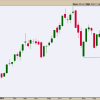Upping the ante following the initial weaponization of the dollar in 2022, the United States and a number of allied nations have agreed in principle to begin distributing profits on seized Russian assets to Ukraine. Interest payments on securities in which hundreds of billions of dollars worth of Russian foreign exchange reserves were invested, including US, European, and other sovereign bonds, would thus be transferred into a trust account accessible to the Ukrainian government. The US assertion of this undertaking was codified as the Rebuilding Economic Prosperity and Opportunity (REPO) for Ukrainians Act, signed into law by President Biden on April 24, 2024.
It is another in a series of unprecedented actions not only intensifying economic pressure on Russia but also signaling a shift in the economic dimension of current geopolitical conflicts. And it raises questions as to whether the entirety of those seized assets might be turned over to Kyiv should their reportedly declining war effort continue to weaken. (The legality of such a measure is beyond the scope of this writing, but discussed in full here.)
Expanding legal justifications for foreign asset confiscation, in addition to currency militarization, is accelerating an intense search for dollar alternatives among US rivals and certain allies as well. Recent data indicates that the process of dedollarization is occurring, albeit at a very gradual rate. The lethargy is to be expected given the global economy’s long standing reliance on the US dollar for international commerce. Barriers to transitioning away from the dollar are considerable owing to deeply entrenched financial infrastructures including technology, accounting systems, long-established settlement practices, and ingrained customs. Those factors collectively reinforce dollar dominance in global trade networks. Unsurprisingly, innovation is underway. Also, global reserve currencies have historically been subject to change. The US dollar supplanted the British pound sterling, which displaced the Dutch guilder, which replaced the Spanish real (‘piece-of-eight’), and so on.
The Chinese renminbi is not a feasible substitute for the dollar for several reasons. Yet a significant movement away from dollar and dollar-denominated exposure is underway. In the first quarter of 2024 China sold a record $53.3 billion in US Treasurys and agency bonds. Explanations for the declining appetite for US debt include attempting to bring balance between the weakening renminbi and the strengthening dollar, which has surged owing to aggressive US monetary policy. Another is risk mitigation, as China (like all other nations) needs to balance its own foreign policy interests against the growing vulnerabilities associated with US dollar use.
But today the dollar’s centrality is threatened as much, if not more, by domestic than foreign actors. One cause can be found in the Biden administration’s March 11, 2024 General Explanations of the Administration’s Fiscal Year 2025 Revenue Proposals. A notable footnote on page 80 contains the following statement:
A separate proposal would first raise the top ordinary rate to 39.6 percent (43.4 percent including the net investment income tax). An additional proposal would increase the net investment income tax rate by 1.2 percentage points above $400,000, bringing the marginal net investment income tax rate to 5 percent for investment income above the $400,000 threshold. Together, the proposals would increase the top marginal rate on long-term capital gains and qualified dividends to 44.6 percent.
Currently, the top marginal US long-term capital gains tax rate ranges from 20 to 33 percent when combining state and federal taxes. The FY 2025 budget proposal would increase this combined tax burden to over 50 percent in many states. This would significantly raise, and in some cases double, the tax rates in key corporate hubs such as California (to nearly 60 percent), New Jersey (to over 55 percent), and New York (to over 53 percent). It would establish the highest US capital gains tax in US history.
An intrinsic part of the dollar’s appeal as a reserve currency owes to liquid, deep, and broad capital markets including government securities, equities, corporate bonds, and a vast array of other investment vehicles. Governments and large corporations with substantial dollar holdings abroad frequently invest them in US Treasury bills and notes to earn a return on those reserves. The current weighted average maturity of US Treasury debt is approximately 71 months (5.9 years). Significantly altering the tax code for long-term investments is likely to impact investor behaviors; the imposition of the highest capital gains taxes in over a century conveys an unequivocally hostile stance toward investors.
On the other side, the dollar faces threats from economic advisers to former President Trump, who have reportedly discussed punitive measures against nations moving away from using the US dollar. Saleha Mohsin of Bloomberg reported last week that discussions have included imposing trade restrictions, tariffs, and penalties typically associated with currency manipulation against dollar defectors. Like proposals for soaring capital gains taxes, an open discussion of punitive measures against nations increasingly wary of dollar-based commerce suggests a troubling and profound lack of awareness.
Recent revelations pertaining to Biden advisor Jared Bernstein reinforce the view that the dollar has internal as well as external enemies. In op-eds as far as a decade back and recent presentations, Bernstein has hinted at purposeful dedollarization policies as a means of fostering reindustrialization within the United States. The purpose would be to reverse the nearly five decades in which China transformed into a manufacturing behemoth, a period during which the US deindustrialized, offshoring most of its industrial economy to become an uber-financialized, service-based economy. It is an objective facilitated in part by taking weak dollar policies to an extreme.
Even setting aside the vast ideological (and practical) gulf between spending lavishly on green energy projects while pursuing a return to a smokestacks-and-ironworks America, it is a shift more easily envisioned than accomplished. Rebuilding America’s manufacturing base, whether accomplished via programs associated with the left (collectivism), the incipient right populism (National Industrial Policy), or a not-at-all inconceivable marriage of the two would quickly result in significant misallocations and crowding-out alongside cascading opportunity costs. But all of that would come only after an all-out assault on the dollar’s value was joined. Or rather, continued; the most facile means of eroding the dollar’s exchange value are stalwarts of the current and recent policy agendas: an inflation bias, debt accumulation, widening deficits, trade interventionism, and so on.
As both sides of the proverbial aisle have made abundantly clear for several decades, incentives for curtailing spending have fled Washington DC altogether. But as with a vision of America’s industrial future that seems to feature higher inflation in the service of wind farms atop coal-fired power plants, here too is a hitch. Ratcheting up Federal spending requires issuing more US government debt, which pushes Treasury yields higher. But if dedollarization becomes a policy goal, falling use of dollars saps a portion of the demand for US Treasuries, reducing the US government’s borrowing capacity. And this, as debt service costs steadily ascend.
The oft-heard argument that there are no substitutes for the dollar echoes hollowly in an era of stablecoins, cryptoassets, expanding commodity markets, and central bank digital currencies. The recent bull market in gold has largely been driven by central banks diversifying away from the dollar and bracing for geopolitical uncertainty.
Russian commodity dealers are increasingly turning to stablecoins, such as Tether (USDT), to execute financial transactions with Chinese counterparties in circumvention of traditional payment systems. At least two major unsanctioned metals producers have started using stablecoins and other cryptocurrencies for cross-border transactions, with settlements often processed through Hong Kong. The transition highlights the lasting impact of international restrictions following the 2022 invasion of Ukraine on the Russian economy, especially for companies trading commodities like metals and timber, which have faced challenges in receiving payments and purchasing equipment despite not being sanctioned.
The increased use of cryptocurrencies underscores the complications even in countries like China, which did not join international sanctions but have tightened compliance measures due to threats of secondary sanctions from the US Treasury. Stablecoins offer a quick and cost-effective alternative to currency-based cross-border transactions, reducing the risk of frozen or seized bank accounts. This trend reflects a broader adaptation within Russia, with the central bank showing a more open stance towards crypto in international transactions and lawmakers considering fully legalized stablecoin use. Additionally, some Russian commodities firms–in a throwback to methods employed by the Council for Mutual Economic Assistance (CMEA) during the Soviet era–have resorted to barter deals, circumventing international financial transfers altogether.
China is increasing its gold reserves, which now comprise roughly 5 percent of its total reserves. This is gold’s highest share of the Chinese reserve base since 2015. That accumulation reflects not only a response to dollar strength and trade tensions, including new tariffs on Chinese goods, but also a broader effort to diversify away from dependence on the dollar. Central banks worldwide have been purchasing gold and opening foreign currency accounts in local/regional banks which heretofore they have not, insulating themselves from the prospect of monetary predation.
The greatest threat to the soundness and utility of the US dollar, and in turn to the financial health and prosperity of American civil and commercial life, comes not from shadowy figures in faraway lands, but from unremarkable apparatchiks carrying out the edicts of US officialdom. Political capacities for destroying monetary fundamentals in the pursuit of short sighted, ill-conceived and self-serving policies dwarf what elites in outlying capitals dare dream of, let alone accomplish. The flight from the dollar–still in its nascent stages, and likely reversible with economically coherent, consistently applied policies — was spurred on by poor judgment, opportunism, and arrogance. Slower and at times quickly, dedollarization will proceed until the fundamental values and policies that positioned the dollar as the anchor and lodestone of global commerce are restored.

































